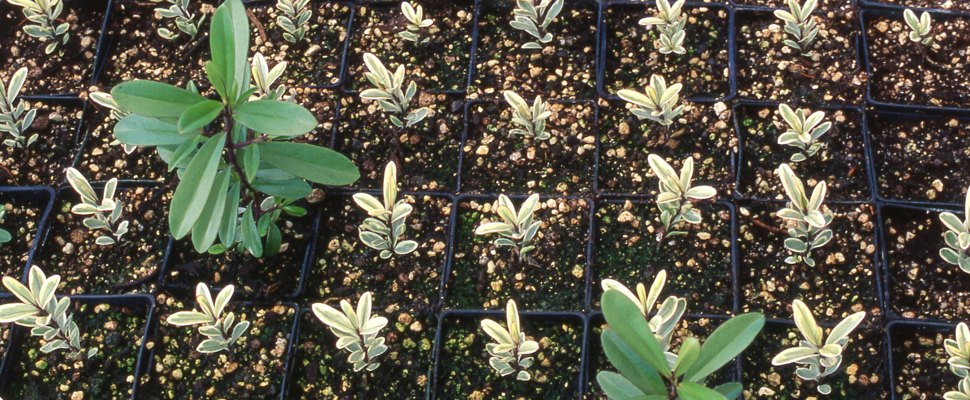
Cuttings
Taking plant cuttings is a method of producing plants that will have the same characteristics as the parent plant. If you have a favourite shrub, cuttings are a perfect way to create exact replicas to ensure you will always have a specimen in your garden or to share with friends.
Watch Jack Hobbs show you how to take cuttings in his autumn Garden Advice video - jump to 5:45 to learn how to take your own cuttings.
How to take cuttings
- Take cuttings with sharp secateurs when plants are fully hydrated. First thing in the morning is a good time.
- From the tip of a shoot cut a 7-10cm piece of healthy material just below a node. Take cuttings from non-flowering stems.
- Carefully remove excess leaves to reduce transpiration, so cuttings do not wilt. However, some foliage should be retained to allow photosynthesis to occur.
- Keep cuttings moist, cool and shaded (collecting in a damp plastic bag is a good idea) until you are ready to put them in a propagation medium.
- Use a growing medium that is low in nutrients with proper aeration and drainage, such as commercial cutting mixes or sharp sand. The medium should be kept moist but not too wet, or the roots may rot.
- Optionally, dip cuttings into rooting hormone. Insert cuttings sufficiently deeply into the media, so they are supported – inserting about 1/3 is about right.
- To keep cuttings turgid as they develop roots, keep them in a cool, humid place. Increase humidity by placing a plastic bag over a pot of cuttings.
- Place in low to medium light so that the cuttings can still photosynthesise.
Softwood Cuttings
Softwood cuttings from new growth are suitable for some perennials and shrubs, such as Coleus and penstemons. They are usually taken in spring. Follow the same process as above, but note that softwood cuttings require extra humidity to prevent wilting.
Semi-hardwood/ripe cuttings
Semi-hardwood cuttings are firmer than softwood cuttings. They are commonly used for evergreen shrubs such as camellias, rhododendrons, coprosmas, hebes, daphnes and herbs like bay, lavender, rosemary, sage and thyme. They are usually taken in late summer through to early autumn when new growth has matured and become firmer.
Take semi-hardwood cuttings the same way you would softwood cuttings. Rooting of semi-hardwood cuttings can be further encouraged by ’wounding’, which involves taking a thin longitudinal slice from the base of the cutting.
Hardwood Cuttings
Hardwood cuttings are suitable for deciduous climbers, shrubs, trees (including fruiting), e.g. willow, some viburnum, dogwood, roses, berries and leucadendrons. They are usually taken when plants are dormant in winter.
- Because deciduous plants have no leaves in winter, the cuttings do not need the same highly humid conditions to prevent wilting.
- Hardwood cuttings are often inserted straight into the garden, either where they will remain or for transplanting at a later date.
- The cuttings are relatively large: cuttings can range from 15 to 25 cm, to over 1 metre in the case of poplars and willows.
- First, make a sloping cut above a bud or node so you know it’s the top end of the cutting. Make a straight cut at the bottom of the cutting below a node. Wound the base of the cutting by slicing away a thin longitudinal strip and dip into a rooting hormone. Insert about halfway into the soil or cutting media.
- As a rule, hardwood cuttings take about a year to be ready (usually by next autumn or winter).